Jazz: A Stolen Music
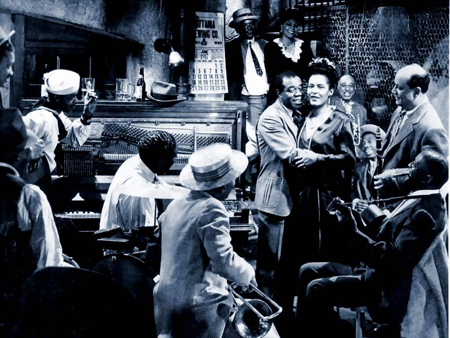

Billie Holiday & Louis Armstrong circa 1946
Deep in the heart of New Orleans, King Oliver’s Creole Jazz Band was in the second chorus of Louis Armstrong’s riveting cornet solo. In the back of the club, Nick LaRocca, a young, white jazz cornetist from the Big Easy watched Satchmo in amazement, hoping one day to sound like him. Later on, LaRocca got his wish, and went on to become one of the founders of The Original Dixieland Jass Band. He was one of the many white jazz musicians who grew up admiring the black jazz musicians who founded this genre of music. White jazz musicians then went on to emulate the earlier black musicians and co-opt the style.
Jazz was created in the South with its cultural center in New Orleans, going back to slaves celebrating with music in New Orleans. The early stages of jazz were a hybrid between traditional African music and the music slaves created while working in the fields of the South. African music was rooted in rhythmic percussion, while the slave music was bluesy and influenced by the music in churches. Combining these two elements, ragtime and blues, the precursors to jazz, were born. “Similarly, one might see [jazz] as an alliance between ragtime and the blues, with importations from French and Spanish folk music, Baptist hymns, and martial music” (Williams 26). Jazz did not suddenly appear; its roots incorporate many aspects of America’s early development, especially the unique characteristics of the South.
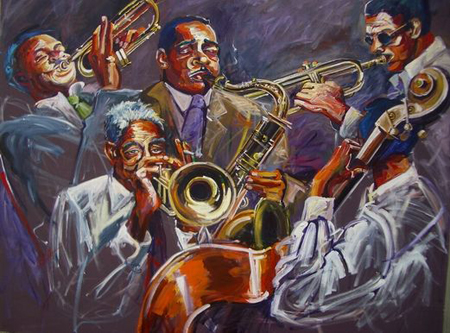
Slavery was an important influence on jazz music, specifically the music and culture that arose from Congo Square, a city block in the middle of New Orleans, where blacks were free to practice their religions and music. In Congo Square, there was always dancing with music, and the energy of the area was always vibrant and upbeat (Gioia 4). New Orleans was first founded by the Latin-Catholic Church, so by the time blacks reached the area, their culture came together with the already present Latin culture, which created hybrid music like jazz, Cajun, Zydeco, blues and many others (Gioia 6-7). This conversation continued among genres and cultures when white musicians began to appropriate jazz in the early twentieth century. By 1910, “the Americanization of African Music had already begun, and with it came the Africanization of American music–a synergistic process…anthropologists call it “syncretism”–the blending together of cultural elements that previously existed separately” (Gioia 5). African music had an influence on American folk music, which in turn had an effect on popular American music, thus creating a music that quickly sparked and engulfed the American radio waves, not just in the South, and not just among African Americans.
In jazz, black musicians have stereotypically been thought of as the “natural” musicians. Historically, they have been thought to have a sharp ear and a knack for catching on quickly to tunes they do not know. “Negroes certainly could not have unnatural rhythm. The music ultimately comes from people, not alone from their environment or their culture influences. Certainly blacks must have a rhythm natural to their own music and their own dances” (Williams 7). On the other hand, white jazz musicians have been seen as newcomers to jazz, technical practitioners rather than natural, well-rounded musician. The shortcomings of white jazz musicians has been perceived to be that they do not have the feel or background necessary to play jazz as well as black musicians.
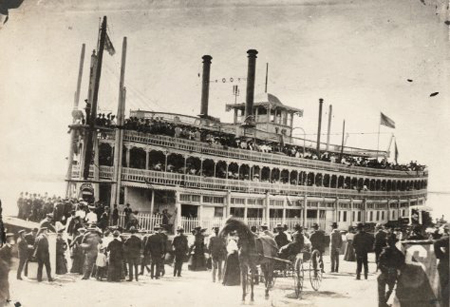
The iconography of the jazz world in the early 1900s reflects the separation of races both in the music of the time and the culture as a whole and the different perceptions of the experiences each race had with jazz. In 1917 composers Coleman Goetz and Leon Flatow published the sheet music for Everybody Loves a “Jass” Band. On the cover of the sheet music, an African American man is seen dancing and smiling in the foreground to the all white band playing in the background. His features are caricatured in a typical way for the time, with very large lips, a protruding cleft and an exaggerated smile. The white marching band, however, stands in a rigid upright posture and is marching in step with one another. Their costuming indicates their relationship to an established institution, either educational or military. The title suggests a coming together of blacks and whites through jazz music. The image on the cover re-enforces that intention, but also emphasizes the continued segregation occurring during that time. The black man is farther away from the white marchers, who seem to be walking in a steady, straight line. The black man’s footsteps indicate a looser interpretation of the music and its direction. Although people of two races are portrayed in the same image, listening to and enjoying the same music, they are not actually celebrating the music in the same style or location.
When jazz became popular in the early 1900’s, it was segregated, much like the rest of the country. Black musicians were not allowed to watch other blacks play in white clubs, so they began touring throughout the country, playing outdoor shows and clubs where other blacks could come and listen. The Streckfus Line in St. Louis, was a good example of this. Beginning its operations in 1903, it sent floating summer dance halls up and down the Mississippi. By 1915, Streckfus began showcasing black musicians, some of whom would go on to be greats, like Louis Armstrong and Lester Young (Peretti 39). One white jazz musician who was lucky enough to play on the Streckfus Line was Leon Bismark “Bix” Beiderbecke. Born in Davenport, Iowa, in 1903, Beiderbecke would frequent the boats as a teen to listen to the black musicians play. “There is little doubt that Bix heard [Louis] Armstrong on one of these riverboats and also a white trumpet played named Emmet Hardy, who unfortunately never recorded” (Schuller 187-188). Beiderbecke absorbed everything he could from these musicians, and went on to be one of the few outstanding white jazz musicians of the time. He was reputed to be one of the only ones who thoroughly studied and appreciated the music. “Bix Beiderbecke is the first white jazzman whose work one can take seriously, and that is at least partly because he took jazz seriously” (Williams 64). Even though he died at 28, Beiderbecke made some black musicians’ compositions famous through his elegant interpretations. Tunes like “Baby Won’t You Please Come Home” by Clarence Williams, and “Way Down Yonder in New Orleans” by Turner Layton.
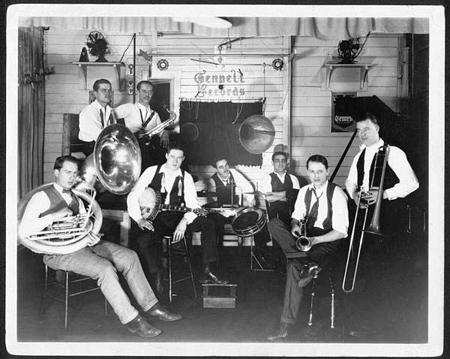
In his recording of Irving Mills’ Riverboat Shuffle, Beiderbcke captured the essence of the type of music that was played on the boats that traveled up and down the Mississippi. Recorded in 1924, Beiderbecke’s arrangement includes improvisation, which was just becoming popular in the jazz world. The shuffle feel in the song gives the listener the energy and pacing of the steam boats going up and down the river. The song’s melody is stylized in the way of silent films, where the film would be faster than reality. Starting the solo section off with a melodic cornet solo, Beiderbecke manifested the spirit of being on a riverboat. This particular recording paid homage to black and Southern culture in its tone and emotional content. Through his traditional “hot jazz” interpretation in his cornet solo, Beiderbecke portrayed his respect and knowledge of the music and the musicians he watched so carefully on the Streckfus Line.
After Beiderbecke’s teenage years watching the musicians on the Streckfus Liner, he finally joined a new band in which he would record the best music of his career. This music was created with a white, seven man jazz group, known as The Wolverines, who were most known for their “hot jazz” and different interpretations of African American composed jazz tunes. The name “The Wolverines” comes from a Jelly Roll Morton song called “Wolverine Blues”, which they performed numerous times (Williams 65). The Wolverines traveled around the United States, and quickly became a big hit. Their shows received a lot of publicity, including a review in a September 1924 issue of Variety. In this review Abel Green said of the Wolverines, “As a torrid unit, it need doff the mythical chapeau to no one. Their sense of rhythm and tempo is ultra for this type of dance music, and their unquestionable favor with the dance fans speaks for itself” (Green). The band was praised as a phenomenal dance band, and Green went on to say that, “Leon Beiderbecke is a ‘hot’ trumpet” (Green). Publicity like this helped Beiderbecke’s career flourish. In late 1924, the group recorded their first album, around the same time Louis Armstrong started recording as a solo artist. Jazz enthusiasts at the time compared the two to each other, showing how similar they were. Even Armstrong praised Beiderbecke’s work, saying, “[Bix’s] pretty notes went right through me” (Armstrong 12). Although Beiderbecke did not live to continue creating music past 1931, Louis Armstrong was lucky enough to carry on.
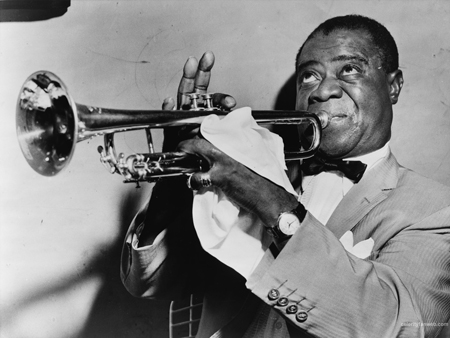
Armstrong began his career in 1919 after his trumpet teacher left New Orleans to play in a band up north; Armstrong was called in to take his spot. From then on, Armstrong established himself not only in New Orleans, but the entire South, then eventually the rest of the country, as arguably the greatest jazz musician who has ever lived. To Armstrong, it was always about the music. He came from a fairly poor family in New Orleans, and being an African American made life all that much harder for Armstrong. His music is a true testament to his experiences in his life because every note he played had a soul and a meaning. Unlike many other musicians, Armstrong truly connected to his music, because he understood the meaning, the pain, or the happiness behind each song being played. In this respect, Beiderbecke and Armstrong were truly comparable. Although Beiderbecke’s musical arrangements with The Wolverines could be related to those of the Original Dixieland Jazz Band (Williams 65), his playing as a soloist blows the Original Dixieland Jazz Band out of the water. His notes were not only melodically beautiful, but the soul and knowledge he put into each note were heavily conveyed to any listener. This held true for Armstrong as well. Both men were extremely influential musicians in the early development of not only jazz itself, but the itinerant jazz movement as well.
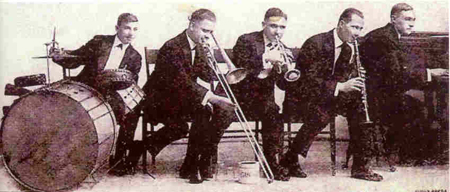
The itinerant jazz bands, comprised of black musicians, traveled throughout the South and the Midwest playing shows in either small clubs or in informal venues like fields and town squares. When Southern black musicians traveled North, their lifestyles clashed with those of the Northern blacks. “Just as in New Orleans, jazz was buffeted, strained, and shaped by tensions between black groups in Northern Cities. Over time, however, the southern folk and northern bourgeois styles and beliefs of urban blacks gradually blended into an urban African-American culture that could at least absorb blows inflicted upon it” (Peretti 58). African Americans, as a whole, worked out their differences, unlike the differences between blacks and whites. Blacks struggled with the constraints whites put on them due to the color of their skin. Blacks in the north had difficulty incorporating newcomers into their already formed social standards designed to protect them against white judgment. “[T]he white majority perceived [blacks] as a single, despised group” (Peretti 58). Northern blacks, in their effort to maintain harmonious relationships with whites, had evolved an elaborate, unspoken code of conduct, which was different from the code of conduct devised in the South by blacks who were facing a more overtly hostile white population. Blacks in the South were more likely to be subservient and deferential, while blacks in the North tried not to draw negative attention to the race.
Many locations that itinerant jazz bands initially played in were very racist and hateful towards black musicians. Black musicians, despite the racism, “toured restlessly during the summers, and thus perpetuated the spirit of the southern musicianer” (Peretti 66). Recording technology was not an easily available resource to the Southern black musicians, so the only way to publicize their music and earn a living was through touring. The touring bands, depending on the location, could not stay in hotels, so they boarded in houses and apartments of other blacks in the area they were visiting. “In Cincinnati the downtown region provided most of the migrants with homes, as well as eating places, nightclubs, and gambling houses that preserved the spirit of black riverside communities in southern cities” (Peretti 64). As jazz became a less regional music, Southern black musicians began to tour more and more in the North because of the better reception they received as blacks. This is a major factor in the spread from the black community to the white community.
As Jazz swept over the South, the music expanded and spread like wildfire into the North. Black players began traveling from New Orleans to the North, where jazz was beginning to take hold among white musicians and audiences. “White players especially rebelled against the regimentation of formalized learning” (Peretti 85). They often had not finished high school, and were so into jazz they jumped right into playing, touring, and recording and were accepted into African American Jazz culture (Peretti 85). This migration of the music launched jazz’s popularity and acceptance as America’s music, not just as the music of African Americans from the South. Some white musicians quickly became better known than the African American musicians who had originally created the music:
During the twenties, in Kansas City, Pittsburgh, and above all in Chicago, New York, and the other largest northern cities, some black musicians began to conceive jazz as the African-American art or classical music. The white publicists and critics who first defined jazz for the mass public rarely praised the music as an art form, and in fact they actually ignored the role of blacks in its creation. (Peretti 70-71)
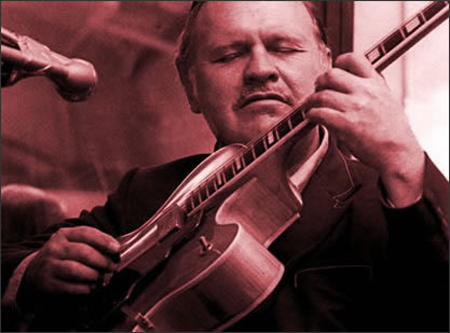
White musicians took the music for themselves and adapted it to their own tastes. Jazz went from being a specialized African American music to a widely recognized American form of entertainment. George Barnes, a white jazz guitarist in Chicago commented in a Works Progress Administration interview in 1939, “I think American jazz is part of American folk music…and in the long run I think it will develop into a real music, a finished product…Some people say that American music is low because it was originated by Negroes but that’s not so. It hasn’t developed yet but it will” (Barnes Form C Text 6). White musicians recognized that the music came from an African American background, but at this point white musicians felt just as entitled to call it their own as black musicians did.
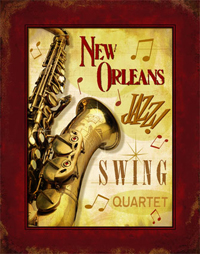
Even though white musicians recognized that jazz was a black music, some whites were differentiating their goals for the music from those of contemporaneous black musicians. George Barnes, in speaking of his influences, denigrated Louis Armstrong saying that he “never benefited by Armstrong and [Johnny] Hodges. They play different music” (Barnes Form C Text 3). Barnes went on to explain that it was not that his music was more intricate or melodically complex, but it was the fact that, “Armstrong’s attack and expression is a different thing. It’s jagged when it comes to delicacy and terrific when it comes to feeling. I think the trouble is he isn’t satisfied to play good music. You feel he tries to make great music. Therefore he’s not always good” (Barnes Form C Text 3). Barnes recognized that Armstrong was a fantastic musician, but Barnes held no interest in emulating Armstrong’s work. Barnes’s interest, similar to that of other white musicians, differed immensely from the direction of black jazz. White jazz, at this time “made crucial steps away from simple embellishments and arpeggios toward melodic invention…giving jazz harmonic and linear enrichments, showing how lyric it might become” (Williams 68-69). White musicians, as jazz became more popular, focused on refining the technical aspects of the jazz they played, while the black musicians continued to develop a framework of improvisation and emphasized the importance of soulfulness in the music itself. “The white listeners who came to the South Side and Harlem often shared the notion that the ‘jungle music’ they heard was a debased black form of white popular music. Blacks themselves had to draw attention to the new style, but this was not something they were inclined to do” (Peretti 71). With jazz at its peak of popularity, this misconception that jazz was a white music furthered white musicians’ sense of superiority and ownership of the art form. White musicians took this attitude as permission to do with the music as they pleased.
Since the mid 1800s, jazz music was rooted in the black South of America. Overtime, jazz was shaped and shifted as American culture changed. Jazz originated as a black music, but eventually expanded into mainstream America where white musicians made jazz into a music different from what it might have been without a white influence. The evolution of jazz began with its roots in early slave music which then influenced American folk music, which in turn influenced jazz, which when finally mixed with white culture to become a music that Americans recognized as popular music.
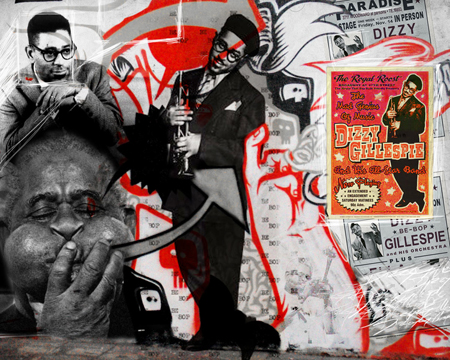
Works Cited
Armstrong, Louis. Louis Armstrong. In His Own Words. Oxford: Oxford University
Press, 1999. Print.
Gioia, Ted. The History of Jazz. New York ; Oxford: Oxford UP, 1998. Print
Green, Abel. “Band And Orchestras Reviews The Wolverines (7).” Variety [New
York] Sept 24, 1924. Print.
“Jazz Music (Chicago) Interview with George Barnes.” Interview by Sam Ross. Works Progress Administration [Chicago] 3 May 1939. Print.
Mills, Irving. “Riverboat Shuffle.” Rec. 1924. Bix Beiderbecke Vol. 1 – Singin’ The
Blues. Bix Beiderbecke. 1924. MP3.
Peretti, Burton W. The Creation of Jazz: Music, Race, and Culture in Urban America.
Urbana: University of Illinois, 1994. Print.
Schuller, Gunther. Early Jazz: Its Roots and Musical Development. New York: Oxford
UP, 1986. Print.
Williams, Martin T. The Jazz Tradition. New York: Oxford UP, 1993. Print

